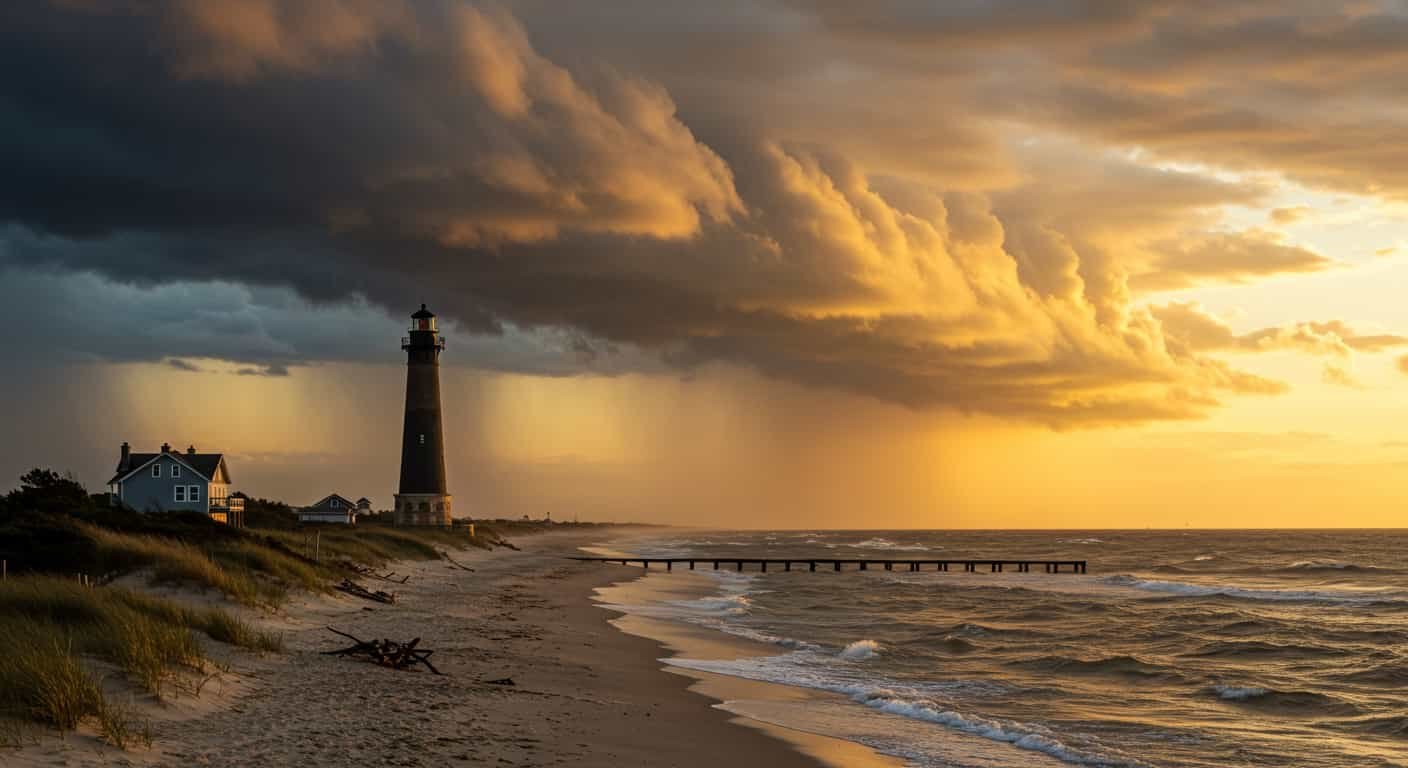
Newsletter Subscribe
Enter your email address below and subscribe to our newsletter

Enter your email address below and subscribe to our newsletter

North Carolina’s coastline is no stranger to nature’s most powerful storms. Hurricanes sweep in from the Atlantic with relentless winds and flooding rains, while nor’easters lash the coast with icy precision, reshaping beaches and testing the resolve of those who call this place home. These storms are more than just weather events—they are defining moments in the state’s history, leaving behind lessons in resilience, adaptation, and the unyielding spirit of coastal communities.
Here, we explore the most destructive hurricanes and nor’easters to strike North Carolina, the science behind their fury, and how the state continues to prepare for an uncertain future.
When Hurricane Hazel made landfall near Calabash on October 15, 1954, it wasn’t just another hurricane—it was a catastrophe that reshaped the coast. With winds reaching 140 mph, Hazel obliterated beachfront homes, swept away bridges, and left entire communities underwater. What made Hazel particularly devastating was its speed—unlike slow-moving storms that weaken over land, Hazel barreled inland with hurricane-force winds still intact, ravaging areas as far north as Toronto.
The storm’s legacy lives on in stricter building codes, better evacuation plans, and the sobering realization that no storm should ever be underestimated.
If Hazel was a lesson in wind, Floyd was a lesson in water. Just weeks after Hurricane Dennis soaked the ground, Floyd dumped up to 20 inches of rain in some areas, turning eastern North Carolina into an inland sea. Rivers swelled beyond their banks, drowning towns like Princeville—one of the oldest Black-founded towns in America—under nine feet of water.
The flooding was so severe that it exposed another crisis: the environmental toll of industrial hog farming. Floodwaters overwhelmed waste lagoons, spilling toxic sludge into rivers and igniting debates about agriculture regulations that continue today.
Hurricane Matthew was a grim preview of what was to come. It stalled over the coast, dumping 18 inches of rain and overwhelming drainage systems. Two years later, Florence followed an eerily similar path, lingering for days and unleashing record-breaking floods.
These storms made it clear: climate change is making hurricanes wetter, slower, and more destructive. Scientists warn that rising sea levels and warmer ocean temperatures will only intensify future storms, forcing coastal communities to rethink how they prepare.
Hurricanes grab headlines, but nor’easters are just as capable of devastation. These winter storms, fueled by cold Arctic air colliding with Atlantic moisture, can hammer the coast for days—eroding beaches, swallowing roads, and cutting off islands.
For five relentless days in March 1962, hurricane-force winds and towering waves battered the Outer Banks. The storm, coinciding with a high spring tide, breached dunes, flooded towns, and even carved new inlets. When it was over, more than 1,800 homes were destroyed or damaged, and entire sections of Highway 12 were washed away.
While the book and movie The Perfect Storm focused on a doomed fishing vessel, North Carolina was fighting its own battle. Waves as tall as 25 feet crashed onto beaches, ripping apart piers and swallowing sand dunes. The storm was a brutal reminder that nor’easters can be just as destructive as hurricanes—sometimes even more so, because they strike with little warning.
Today, meteorologists use hurricane hunter planes, supercomputers, and real-time flood mapping to predict storms with unprecedented accuracy. UNC researchers study storm surge patterns, while emergency managers use social media and wireless alerts to reach those in harm’s way.
After decades of destruction, coastal towns are adapting. Some, like Nags Head, invest millions in dune restoration to buffer against waves. Others elevate homes on pilings or use flood-resistant materials. The challenge? Balancing protection with the natural beauty that draws people to the coast.
In the end, the best defense isn’t just concrete and steel—it’s the people who live here. Fishermen who know when to haul their boats inland, neighbors who check on each other before evacuating, and volunteers who rebuild after every storm.
North Carolina’s coast will always be a battleground between land and sea. The storms will keep coming, likely stronger and wetter than before. But with each disaster, the state learns, adapts, and grows more resilient.The question isn’t if another major hurricane or nor’easter will strike—it’s when. And when it does, North Carolina will be ready to face it, just as it always has.